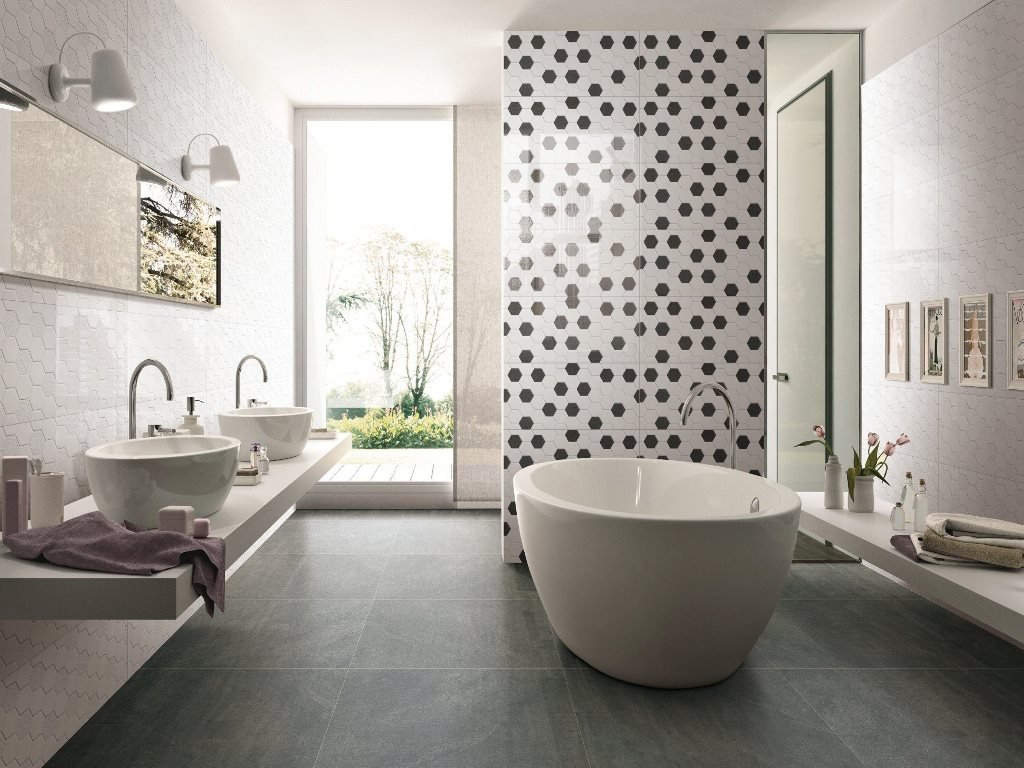
Discover Everything Aout Bathroom Wall Tiles
Picking bathroom wall tiles is one of the many choices you have to make when designing your home. There are many things to consider, from the type of stone you want to use to the style and finish of it. There are a variety of different options all different for their looks, practicality and longevity. This article will cover everything you need to know about wall tiles and how to choose the best option for your bathroom.
Types of tiles
First choice you want to make when choosing your bathroom wall tiles is the material. You can either get real stone tiles or manmade ones. Here are some of the most common ones:

Marble
Marble is a popular choice not only for the bathroom tiles, but also all around the house. This is because of the unique and elegant look of marble, which suits modern interior perfectly. You can get marble tiles in different colour tones and a variety of veining patterns, from subtle to striking.
Travertine
Another stunning natural stone often used for bathroom wall tiles. It has warm tones that are suited for a more cozy bathroom interior. It is best to use filled travertine so the water does not leak through and ideally you want it to be sealed, to ensure longevity.
Limestone
A very stylish choice of wall tiles, popular for the pale finishes, although you can get darker colours as well. Keep in mind that limestone is a softer stone than most other ones, so it has to be sealed for protection from scratching.
Porcelain tiles
A very common choice of manmade tiles that will last you years. You can get them in a variety of different styles, colours and finishes, as they can be tailored specifically to your bathroom. Porcelanosa offers some great pre-made designs though, so you will likely find something you like. Besides their look, porcelain tiles are very easy to maintain.
Ceramic tiles
Another great choice for man made tiles that is also very affordable and easy to look after. However, they aren’t quite as dense as the porcelain tiles, so they tend to wear off easier. That shouldn’t when using them for the walls though.
Different tile finishes

Matte
Tiles with a matte finish have a hard surface that is non-reflective, and tends to be granular. These are often used in traditional looks for bathrooms, or to create a rustic feel. Because of the surface and texture of matte tiles, they tend to be slip-resistant, making them perfect for wet rooms and such. Porcelanosa bathroom wall tiles are a good example of premium quality matte tiles.
Glossy
Shiny coated bathroom tiles are known as having a glossy finish. These are reflective, meaning they do a good job at brightening up spaces and making them seem both bigger and more light. They may not be slip-resistant like matte, but they’re often still used on floors and walls. In fact, they’re super easy to clean, making them great for the kitchen too.
Textured
Textured tiles perhaps have the best anti-slip qualities, offering good grips from their ridges and grooves. This makes them the number one choice for wet rooms.
The style and patterns

There are many different styles to have bathroom tiles – it’s not only about the finish and material.
Geometric floor
For example, having the tiles matched together in a way that produces a geometric pattern is popular. This adds a certain contemporary feel, as well as inducing some colour into the bathroom. Patterns are also great ways to create illusions. This doesn’t mean having the bathroom feel like it’s spinning when you walk in, but it can mean the floor looks wider than if otherwise is.
Black and white
If you want a classic yet striking look, then the chequerboard look of alternating white and black squares is a great choice. This is a great way to make the floor the main eye catching feature of a bathroom – something many people don’t achieve.
Mirror tiles
Highly reflective mirror tiles can be used on the walls to create a glamorous and sparkly bathroom. This is usually done by fitting the tiles to two adjoining walls so light can bounce around them.
A feature wall
If you really want to make a statement, then you can use tiles to create a feature wall. This is usually done with large tiles being spread on a wall with different shades and tones of similar colours. For example, this could be dark grey, light grey and tanned colour. You could also opt for a strictly monochrome feature, or something more colourful.
Conclusion
All in all, there is no one best choice for bathroom wall tiles – it really all depends on what sort of interior and style you are going for as well as how practical you want to be with them.




